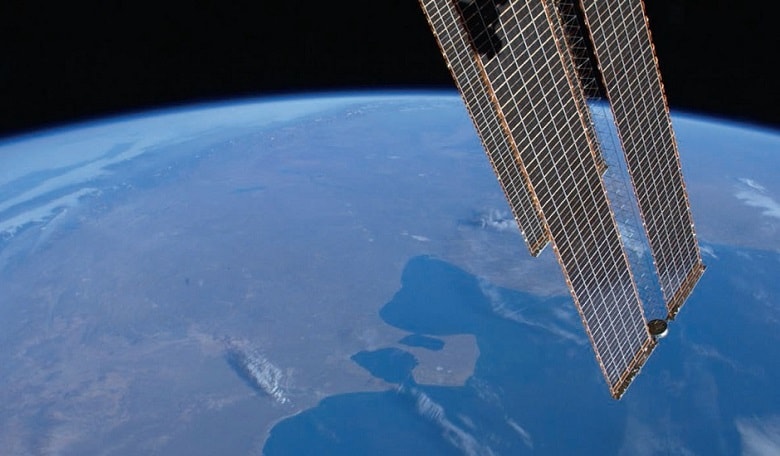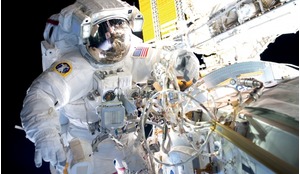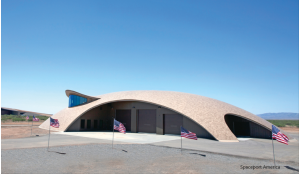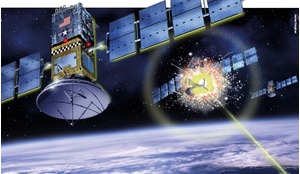Space is, in many ways, like Formula 1 motor racing. Both have a reputation for being expensive and glamorous, as well as dangerous for the participants. Drivers and teams in Formula 1 are motivated by a passion to win races, which pushes forward the technology; the technology ultimately finds its way into road cars. Space scientists and engineers are compelled by the need to know and to explore, which also drives the technology forward and generates innovations that people can exploit in a wide variety of contexts.
From space blankets to infra-red ear thermometers, from solar cells to water purification techniques, a bewildering array of items we encounter in our everyday lives can trace at least some of their heritage back to developments motivated by space exploration. ESA, NASA and other space agencies run various initiatives designed to encourage the take-up of space technologies in other sectors.
Space scientists and engineers are compelled by the need to explore… which drives the technology
We have only scratched the surface of what is possible. We can extend the impact of space to wider sections of the economy
This is not necessarily as straightforward as it sounds. Major motor manufacturers invest in Formula 1 with the explicit intention of exploiting the innovations to improve the safety, efficiency and appeal of their road cars. They keep the technology transfer in-house and the target product is recognisably similar to the cars on the racetrack.
Planet hunter sharpens eye surgery
Space is a rich source of technical solutions if you know where to look – and sometimes it’s not the space technology itself that provides the answer, but the devices built to test space machinery to exacting requirements.
Take, for example, the University Eye Hospital in Maastricht. It installed a new state-ofthe- art microscope to be used in precision eye operations, where surgeons needed to manipulate tissue layers a fraction of a millimetre thick.
However, the image they were seeing was blurred, much worse than the expected performance of the microscope.
The reason for this turned out to be the wind, buffeting the outside of the building and causing the hyper-sensitive microscope to shake. The vibrations were tiny, 100 times smaller than the diameter of a human hair, but this was enough to compromise the performance of the microscope.
A solution was found in technology that had been developed to test a highly accurate planet-hunting space telescope. One of the most intriguing questions in modern astrophysics is whether the Earth is unique in the universe in its ability to sustain life.
To find out, we need to be able to study Earth-like planets circling other stars to measure whether their atmospheres are capable of supporting life, or indeed carry the chemical signatures of life. The problem is that a planet’s light is swamped by that of its parent star; it’s like trying to pick out a candle next to a lighthouse at a distance of a thousand kilometres. The only way to do this is to put into space a giant telescope with the resolution to separate these exoplanets from their parent; or, more practically, an array of smaller telescopes that operate together to simulate a single large telescope.
This was the idea behind ESA’s Darwin mission concept, which posed a number of engineering challenges, including whether the light from such telescopes could be combined with the super-precision needed to make the concept work. The Dutch research organisation TNO7 developed an ‘optical delay line’, which combines the light seen from each telescope into a single detailed image. However, it found that it couldn’t test its device properly because of vibrations from the busy roads around its lab.
The solution was to devise a method of cancelling out the external vibrations. Darwin has not proceeded beyond the study phase, but the technology it spawned has taken on a life of its own, and is now offered by Dutch engineering company MECAL in its Hummingbird product.8
Installed in Maastricht’s University Eye Hospital, Hummingbird is able to isolate the surgical microscope from its noisy environment, releasing its full potential for sight-saving operations.
In contrast, the market for innovations derived from space is boundless, and can extend to sectors and companies that have no direct connection to space. Items like solar cells or space blankets, which have been adapted in a straightforward way from space to groundbased use, tend to be the exception rather than the rule.
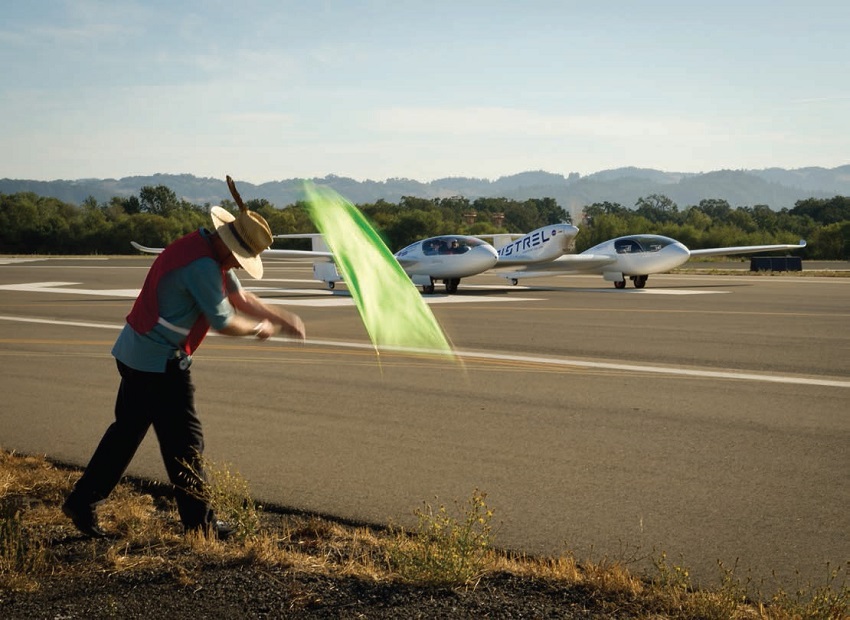 Pipistrel-USA Taurus G4 aircraft competing in the 2011 Green Flight Challenge. The competition was held by NASA and the Comparative Aircraft Flight Efficiency (CAFE) Foundation to advance technologies in fuel efficiency and emission reduction
Pipistrel-USA Taurus G4 aircraft competing in the 2011 Green Flight Challenge. The competition was held by NASA and the Comparative Aircraft Flight Efficiency (CAFE) Foundation to advance technologies in fuel efficiency and emission reduction
More often than not, space innovations find their way into totally unrelated products; for example, research into nano-robots for space applications has spawned a hand-held device for measuring blood viscosity in patients taking anti-coagulants;1 while research on ways to land instrumentation on Saturn’s moon, Titan, has led – incredibly – to a more efficient way to fill packages with lightweight products such as potato crisps.2
Quite often, the value lies not in a specific product or even a technology, but in the knowledge and experience scientists and engineers have gained during its development.
Space is a fantastic vehicle for pushing back the technological frontiers because it not only attracts intelligent people who are driven to solve seemingly impossible problems, but it gives them the resources to do it. Identifying where that knowledge can be exploited in other sectors and making it available to the right people is the challenge, particularly when the target sectors and individuals within them are not necessarily aware of, nor looking out for, the solutions that space can provide.
Raising awareness
The fact that space technology has permeated so many other areas shows how valuable a role it already plays today. But we have only scratched the surface of what is possible. We can extend the impact of space to wider sections of the economy by reaching out to those industries that would not routinely consider space as a technology resource and by seeking ways to accelerate the flow of technology and know-how. This means being proactive in raising awareness among companies that could potentially benefit from space technology, and making those technologies and the associated knowledge available in an efficient, timely and cost-effective way.
Space is a potent resource for innovation, so it would be foolhardy not to make every possible use of the opportunities it provides
There are various initiatives and resources devoted to bringing the rich harvest of spacegenerated technologies to the attention of the wider world. NASA, for example, operates a web-based Technology Transfer Portal under the Office of the Chief Technologist, which contains technologies from all the NASA centres and highlights opportunities to exploit them.3 ESA has a similar portal, the Technology Exchange, which is part of the Technology Transfer Programme office.4 Third-party organisations like the Space Foundation5 or EURISY6 also play a valuable role.
The agencies encourage the licensing of space intellectual property to companies – especially new companies – that want to develop products based on the technology. ESA, for example, supports an expanding network of Business Incubator Centres across Europe where new, competitively selected companies can establish themselves to exploit space-enabled services and products.
Because space technology can find a home in the most unexpected of ground-based applications, more of these kinds of transfers can be generated by encouraging space experts to engage with non-space industries and communities in order to understand their challenges as a starting point for determining if there is space expertise that could provide solutions to their problems.
This is the philosophy behind ESA’s Technology Transfer Network, a series of broker companies across Europe that are tasked with reaching out to non-space industries through events and individual contacts and making connections with technology providers in the space field.
By encouraging partnerships between space and non-space communities that bring together experts in both fields, there is a much greater likelihood of solutions being devised that are relevant and work in practice.
In all of these activities, it is important to realise that research and innovation is a much less deterministic process than is often portrayed in the media. It is impossible to overemphasise the importance of chance associations and sparks of insight, often referred to as ‘lateral thinking’. Creating conditions favourable to this kind of thinking is an important tool in efforts to broaden further the impact of space, which means finding every opportunity to stimulate conversations and interactions between space experts and those in other sectors.
And innovation doesn’t stop at space’s front door. Space knowledge or technology is often just the starting point, and applying it to a different sector can require considerable effort. For this reason it is important to find ways to take the risk out of the adoption of the technology. For example, by building a version that demonstrates that it will operate in the target environment; or by brokering partnerships with experts who can transfer their knowledge rapidly and effectively to the new target application.
We don’t explore space because of the technology it spawns, any more than millions of people watch Formula 1 because it leads to safer and more efficient road cars. Nonetheless, space is a potent resource for technology innovation, so it would be foolhardy not to make every possible use of the opportunities it provides.
The knowledge that has been generated from the space programme has already found its way into a variety of everyday items, often in subtle and non-obvious ways. By understanding the dynamics of technology transfer and by being ever more proactive in making connections to non-space sectors, we can build on this success story and ensure that space plays its full part in boosting our economic well-being and quality of life.
1 See: www.microvisk.com
2 See: www.esa-tec.eu/success-stories/from-space/landing-a-potato-crisp/
3 See: technology.nasa.gov/ and www.nasa.gov/offices/oct/tech_transfer/index.html
4 See: www.esa-tec.eu/ and www.esa.int/Our_Activities/Technology/TTP2
5 www.spacefoundation.org/programs/space-certification/get-certified/nasa-and-esa-technology-transfer-programs
6 www.eurisy.org/
7 www.tno.nl/index.cfm?Taal=2
8 www.mecal.eu/en/semiconductor-industry/products/low-frequency-active-vibration-isolation/hummingbirdtechnology/





